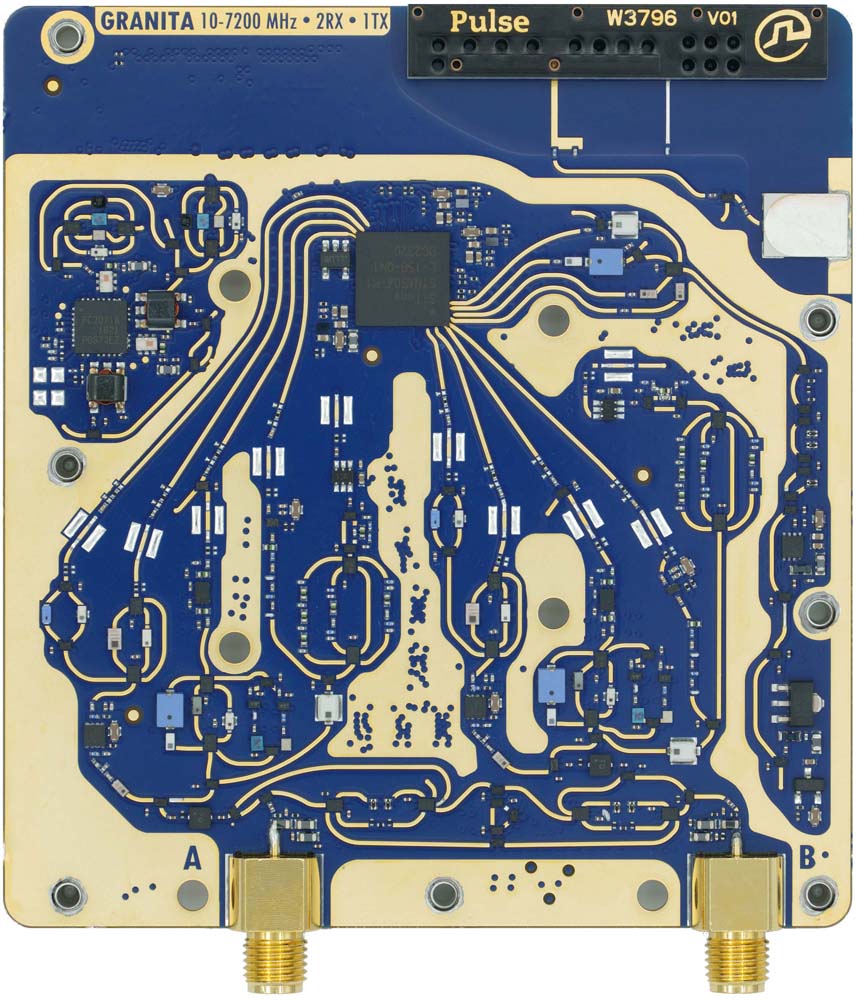Appearance
Granita RF Board
The Granita is a RFNM daughterboard named after the Granita chip from Arctic Semiconductors. It is similar in performance to the IceWings, for which a datasheet is available.
- 10-6300 MHz operation: 600 to 6300 MHz directly via the Granita chip, with an external RFFC2071 mixer extending it down to 10 MHz.
- Concurrent transmission and reception on two different frequencies, or two different receive channels active at the same time.
- Two low phase noise synthesizers, each connected to a receive path, to allow tuning one PLL while using the other in a ping-pong manner to sweep extremely fast while sampling the same RF input (switched at the frontend).
- Complex frontend with 13 preselection filters, several LNAs, two chained transmit amplifiers and variable attenuators. Transmission power of around 20 dBm. Find a block diagram of the frontend here.
- Two embedded antennas covering most of the operating frequency, Pulse W3796 and Partron ACS5200HFAUWB.
Granita limitations
The Granita board has some limitations, stemming from the RFIC manufacturer:
- The tuning range is not continuous, there are some tuning gaps: 750-810 MHz, 1500-1610 MHz, 2190-2200 MHz, 3150-3230 MHz, 4380-4400 MHz.
- The board cannot tune higher than 5 GHz. We believe the next batch should be able to tune to 6.3 GHz.
- The I/Q imbalance calibration inside the RFIC is not running correctly, and results in Path-A often having one of the two I/Q branches off by 45 degrees or more. This should be a software fix.
- The receive I/Q low-pass filter is not as sharp as it should be. This should also be a software fix.
- The RFIC is generating multiples of 30.72 MHz, and those show up on the receive chain, depending on the current LNA gain factor. We are not aware of any fixes planned for this.
